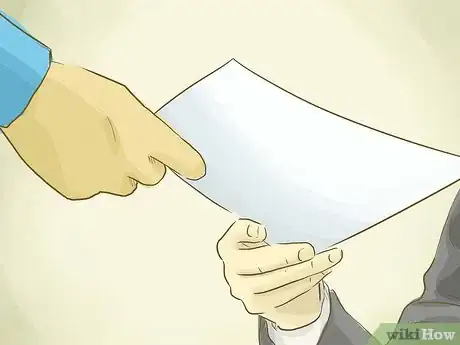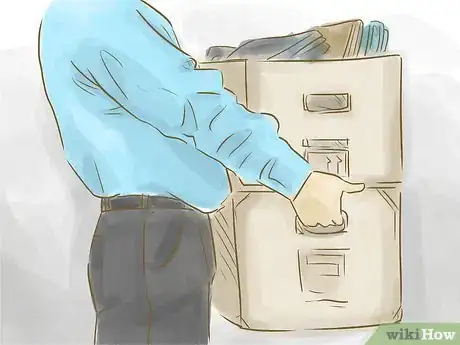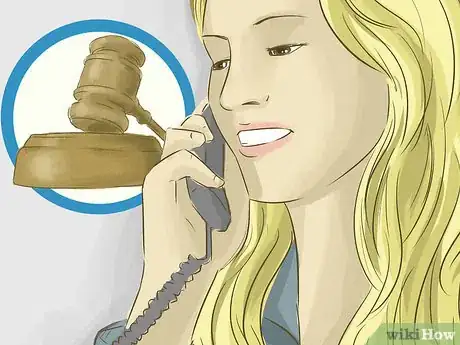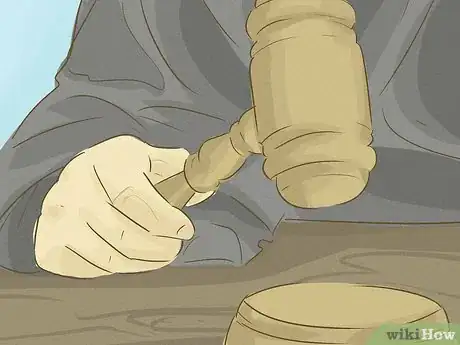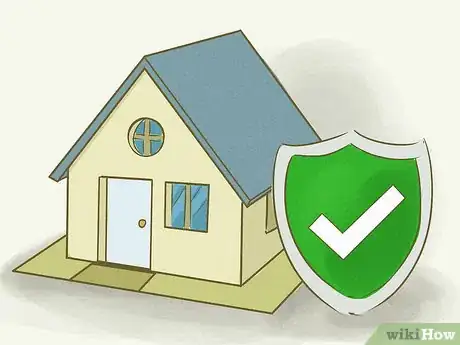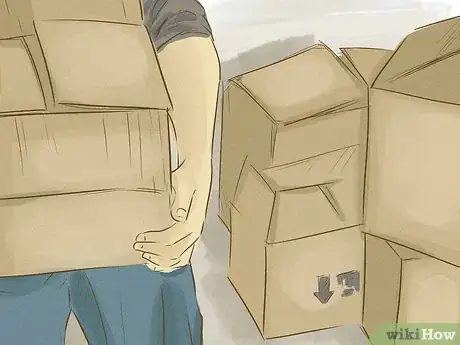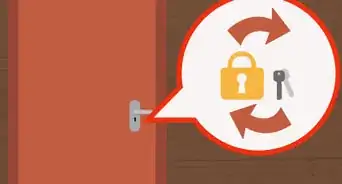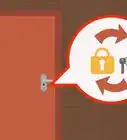This article was co-authored by Clinton M. Sandvick, JD, PhD. Clinton M. Sandvick worked as a civil litigator in California for over 7 years. He received his JD from the University of Wisconsin-Madison in 1998 and his PhD in American History from the University of Oregon in 2013.
This article has been viewed 315,552 times.
As a California landlord, you are entitled to remove tenants who violate the lease agreement on the property they are renting. Assuming their violation is valid, you may immediately begin proceedings to warn and then remove the tenant, if they refuse to heed your warning. Evicting a tenant is rarely easy, but by following proper procedure, you can avoid months of additional legal hassle and lost potential rent income.
Steps
Avoiding a Legal Battle
-
1Make sure that you have legal grounds to evict the tenant. Before doing anything else, make sure that the violation committed by the tenant is grounds for eviction under California law. Under the law, a landlord can evict a tenant if the tenant:
- Fails to pay the rent on time;
- Breaks the lease or rental agreement and will not fix the problem (like keeping when pets are not allowed);
- Damages the property bringing down the value (commits "waste");
- Becomes a serious nuisance by disturbing other tenants and neighbors even after being asked to stop; or
- Uses the property to do something illegal.[1]
-
2Contact the tenant personally. You can avoid courts and sticky confrontations by giving your tenant a call first to try to resolve the situation. You could even try using a legal mediator to resolve the conflict peacefully.Advertisement
-
3Craft a notice of the tenant's violation. To begin eviction proceeding, you must first give the resident notice that they have violated the lease agreement. For correctable violations, like having pets when no pets are allowed, the minimum notice is three days. For a tenant with a month-to-month lease, you must give a longer notice period of 30 days if they have lived there for under a year and 60 days if they have lived there for over one year. In addition, if the tenant has committed a material noncompliance (lease violation other than nonpayment of rent) the period is 3 days notice according to CC § 1161.[2]
- If rent is in default (past due), this notice must specifically spell out the amount due, how exactly to pay the amount due, an unequivocal demand for repossession of the property if rent is not paid within the specified time frame, the date of the notice and the landlord's signature.[3]
-
4Serve the 3-day Notice to the tenant. In order for your notice to be valid, it must be served to the resident. Because many tenants will try to avoid being served in an attempt to avoid eviction, the law allows for alternate methods than just handing the tenant the notice. Your options for serving your tenant are:
- Personally delivering a copy of the notice to the tenant
- If the client is unavailable at home and at work, leaving the notice with a person over the age of 18 at the tenant's residence or place of business and mailing a copy to the tenant.[4]
-
5Allow the tenant an opportunity to remedy the situation. Legal battles are time-consuming and can be expensive even if you end up winning. Giving the tenant time to remedy the problem allows you to potentially avoid these troubles. If the tenant still has not vacated the property or remedied the issue at the end of the time established in the notice, proceed with legal action.
Filing a Lawsuit
-
1File an Unlawful Detainer Complaint. If the time limit established in the notice has expired, you may file a lawsuit to evict the tenant. This is known as an Unlawful Detainer case. It is opened by filing a form known as a Complaint at the courthouse. Upon successful filing, the court will issue a Summons to the tenant that they will have to respond to within five days.[5]
-
2Allow the tenant 5 days to vacate the property. The court allows the tenant five days to move out from the date of service of the Unlawful Detainer notice.[6]
- The tenant can also respond to the notice with a motion attacking the method of service or the sufficiency of the notice, or with an answer that responds to the substance of the complaint.[7]
-
3Request a court date. Once the five days are up, you have a right to request a court date from the court clerk. The court date will usually be set 10 to 20 days from when you file for one.[8]
- During this time you will be unable to collect rent from your tenant. However, the client will ultimately be liable for these rent payments.[9]
-
4Go to court. Brings records of your tenant's violation and of any notices you provided to them before taking the case to court. Also bring a copy of the lease agreement signed by you and the tenant. In most cases, proceedings will take about an hour. However, some may take much longer, depending on the type of defense mounted by the defendant.[10]
- Other documents or filings may be necessary for your case. Every step of any legal process can be incredibly complicated. While it is not necessary that you hire a lawyer, you should at least seek free legal advice from an eviction clinic or the court's self-help center.[11]
-
5Have the local Sheriff serve a "5-day Notice to Vacate" to the tenant. The court mandates that you allow the resident 5 days from posting of the vacate notice to move out of the residency if they lose the case.[12]
-
6Have the Sheriff place a lock on the door to the rental property. This should only be done if the tenant still refuses to leave after the five day grace period.[13]
-
7Deal with any property left behind by the tenant. In some cases these items may be sold or disposed of. However, in others the landlord may be liable for giving the tenant notice of any remaining items. These rules vary by municipality, so it is a good idea to research your local ordinances online or seek professional counsel.[14]
Warnings
- Without a court order the landlord cannot:
- Physically remove the tenant
- Dispose of the tenant's personal property
- Lock the tenant out of the residence
- Cut off the utilities
- Remove outside windows or doors
- Change the locks.[16]
⧼thumbs_response⧽
References
- ↑ http://www.courts.ca.gov/selfhelp-eviction.htm
- ↑ https://www.upcounsel.com/how-to-evict-a-tenant-in-california
- ↑ http://www.landlord.com/guide_to_eviction_process_ca_summary.htm
- ↑ http://www.landlord.com/guide_to_eviction_process_ca_summary.htm
- ↑ http://www.landlord.com/guide_to_eviction_process_ca_summary.htm
- ↑ http://www.courts.ca.gov/selfhelp-eviction.htm
- ↑ http://homeguides.sfgate.com/long-evict-tenant-california-8035.html
- ↑ http://homeguides.sfgate.com/long-evict-tenant-california-8035.html
- ↑ https://www.rocketlawyer.com/article/evicting-a-tenant-in-california.rl
- ↑ http://homeguides.sfgate.com/long-evict-tenant-california-8035.html
- ↑ http://www.courts.ca.gov/selfhelp-eviction.htm
- ↑ http://www.courts.ca.gov/selfhelp-eviction.htm
- ↑ http://www.courts.ca.gov/selfhelp-eviction.htm
- ↑ http://etmoroneylaw.com/2014/quick-hits-1-california-post-eviction-disposition-tenant-personal-property/
- ↑ https://www.rocketlawyer.com/article/evicting-a-tenant-in-california.rl
- ↑ http://www.courts.ca.gov/selfhelp-eviction.htm
About This Article
If you need to evict a tenant in California, try resolving the issue directly with the tenant first. You’ll have legal grounds to evict the tenant if they break their lease, fail to pay their rent on time, or break the law. Try calling the tenant directly to ask them to leave. You can also use a legal mediator to help resolve the conflict peacefully. If they don’t leave of their own accord, serve the tenant with a notice of violation. You’ll need to give them 30 days to vacate if they’ve lived there for under a year or 60 days if they’ve lived there for over a year. If they still refuse to leave after the notice of violation, you’ll need to file an unlawful detainer complaint and take them to court. For more tips from our Legal co-author, including how to deal with any property left by your tenant, read on!





